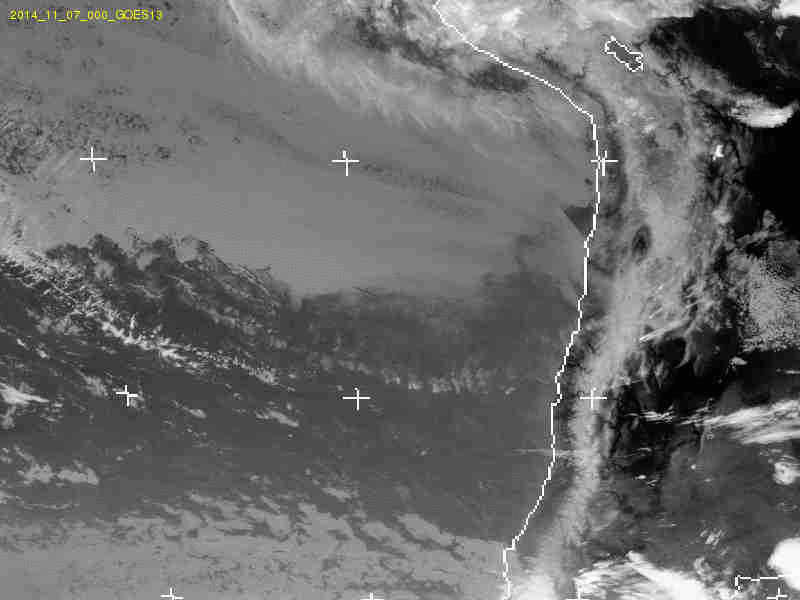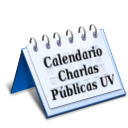June 15, 2016. IFA News
 Astronomers search for planets around other stars using a variety of methods. One of them, very succesfull, is specially effective for detecting planets in wide orbits around young stars, because the light reflected off the planet is not overwhelmed by the light of its host star, and so its easier to detect. Dr. Nikolaus Vogt, from IFA, is part of the research team that took the "picture of the week" for ESO (potw1624).
Astronomers search for planets around other stars using a variety of methods. One of them, very succesfull, is specially effective for detecting planets in wide orbits around young stars, because the light reflected off the planet is not overwhelmed by the light of its host star, and so its easier to detect. Dr. Nikolaus Vogt, from IFA, is part of the research team that took the "picture of the week" for ESO (potw1624).
The image shows us a T-Tauri star named CVS030, distant 1200 LY from the Earth, in the 25 Orionis Group (a little to the northwest of well know Orion´s Belt). In 2012, astronomers discovered an exoplanet (CVSO 30b) orbiting around that star, by using the photometry method of light transit (the light from the star decreases slightly every time the planet passes in front of it). And, when astronomers went back to examine the star again, this time using varied telescopes, combining observations obtained from the VLT in Chile, the W.M.Keck in Hawaii and the Calar Alto Observatory in Spain, they found what would be a second planet. To produce the image they exploited astrometry information provided by NACO and SINFONI instruments from VLT. This new exoplanet, called CVSO 30c would be the small dot that can be seen in the upper left corner of the image (the bright object is the host star). Whereas the previous planet detected orbits very close to the star in less than 11 hours at a distance of 0.008 AU, CVSO 3c orbits at a distance of 600 AU, taking 27.000 years to complete a single orbit. As reference, Mercury orbits at a distance of 0.39 AU from our Sun, while Neptune does so at a little over 30 AU. If CVS0 30c is confirmed to orbit CVS030, it would be the first stellar system that has a close planet detected by the transit method as well as a distant planet detected by direct imaging. Astronomers still investigate how such an exotic system formed in such a short time period, as the star is only 2.5 million years old. Its possible that both planets had some interaction in the past, dispersing them and placing them in their current orbits. Image: Star CVS0 30 in the ESO Picture of the Week, credits, ESO/SChmidt et al.
Associated link: Scientífic paper, Schmidt et al.
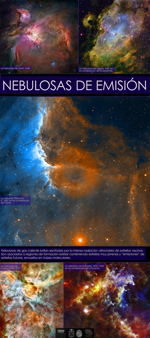 June 13, 2016. IFA News.
June 13, 2016. IFA News.
For two months the Itinerant Exhibition "La Vía Láctea: Nuestro Hogar en el Universo" will be open for viewing by the general public at the Museo de Historia Natural de Valparaíso situated in Calle Condell 1546, in Valparaíso. This exhibition, an initiative of the "Nucleo Milenio para la Vía Láctea", is possible thanks to a project belonging to Dr. Nikolaus Vogt, from IFA, and has been displayed regularly between years 2012 and 2016 in more than 60 Schools and Cultural Centers of the V Region, reaching more remote places like Robinson Crusoe Island. The exhibition may be visited in the Museo de Historia Natural until July 31, between 10 AM and 6 PM, from Tuesday to Saturday, and between 10 AM and 2 PM on Sundays and holidays.
You may reserve this beautiful and colourful collection of Astronomy Images (14 self-sustainable panels of 80x180 cm) for one, or up to two, weeks by filling in the following form. Don´t forget to check out the 2016 Calendar to make sure the Exhibition is available for your date. Image: One of the 14 panels, Emission Nebulae from our Galaxy, the Milky Way.
Form for reserving the Exhibition
You may check out some more images of the Itinerant Exhibition: Exhibition Presentation - Milky Way - Globular Clusters
Mayo 16, 2016. Noticia IFA.
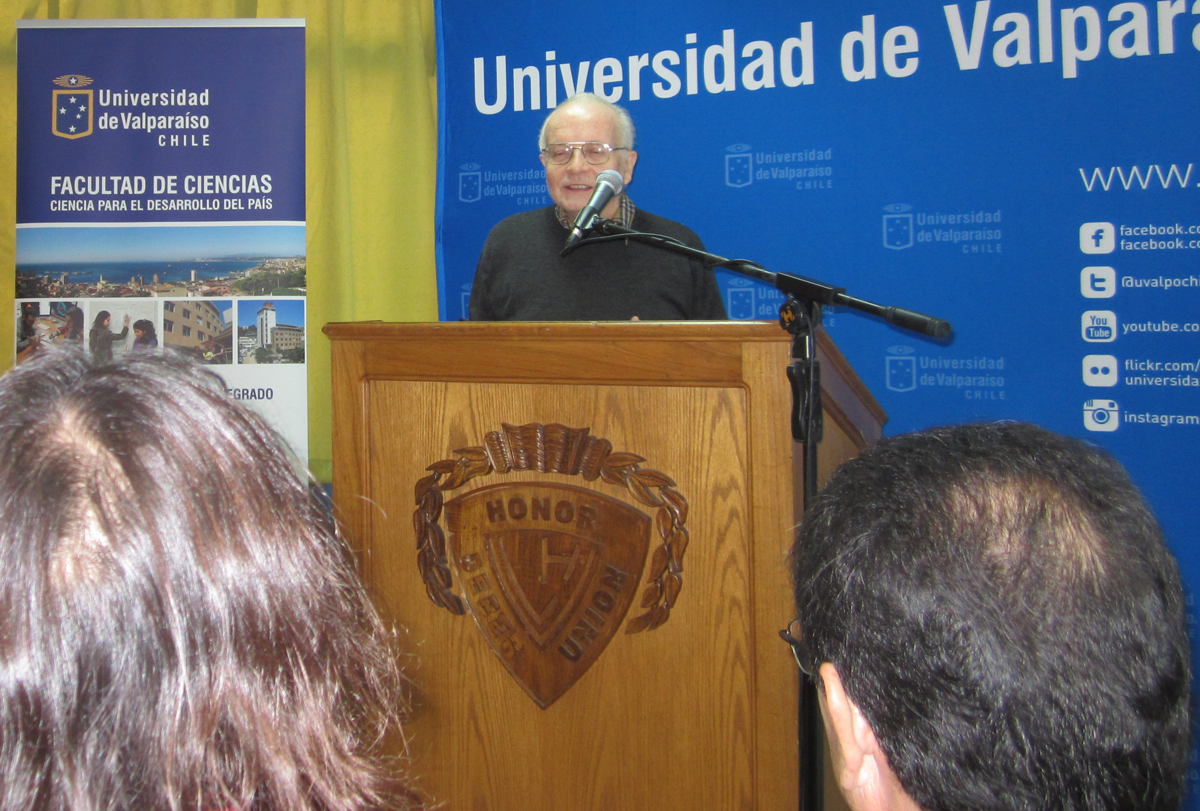 El Instituto de Física y Astronomía, en un esfuerzo más por contribuir a la difusión de las ciencias e incentivar el interés por ella entre los estudiantes de la Región, creó la Exposición Itinerante "El Universo como Máquina del Tiempo", con apoyo del Instituto Milenio de Astronomía (MAS) y el Centro de Extensión y Comunicación de la UV. La inauguración de la Exposición, compuesto por 22 láminas dispuestas en 11 paneles iluminadas por dentro, conteniendo alrededor de ochenta fotografías y representaciones artísticas de la Vía Láctea, objetos estelares y extragalácticos, como también imágenes icónicas de nuestro planeta, se realizó en el Liceo Eduardo de la Barra, y marcó su primer presentación, lugar donde permanecerá hasta el 31 de mayo.
El Instituto de Física y Astronomía, en un esfuerzo más por contribuir a la difusión de las ciencias e incentivar el interés por ella entre los estudiantes de la Región, creó la Exposición Itinerante "El Universo como Máquina del Tiempo", con apoyo del Instituto Milenio de Astronomía (MAS) y el Centro de Extensión y Comunicación de la UV. La inauguración de la Exposición, compuesto por 22 láminas dispuestas en 11 paneles iluminadas por dentro, conteniendo alrededor de ochenta fotografías y representaciones artísticas de la Vía Láctea, objetos estelares y extragalácticos, como también imágenes icónicas de nuestro planeta, se realizó en el Liceo Eduardo de la Barra, y marcó su primer presentación, lugar donde permanecerá hasta el 31 de mayo. 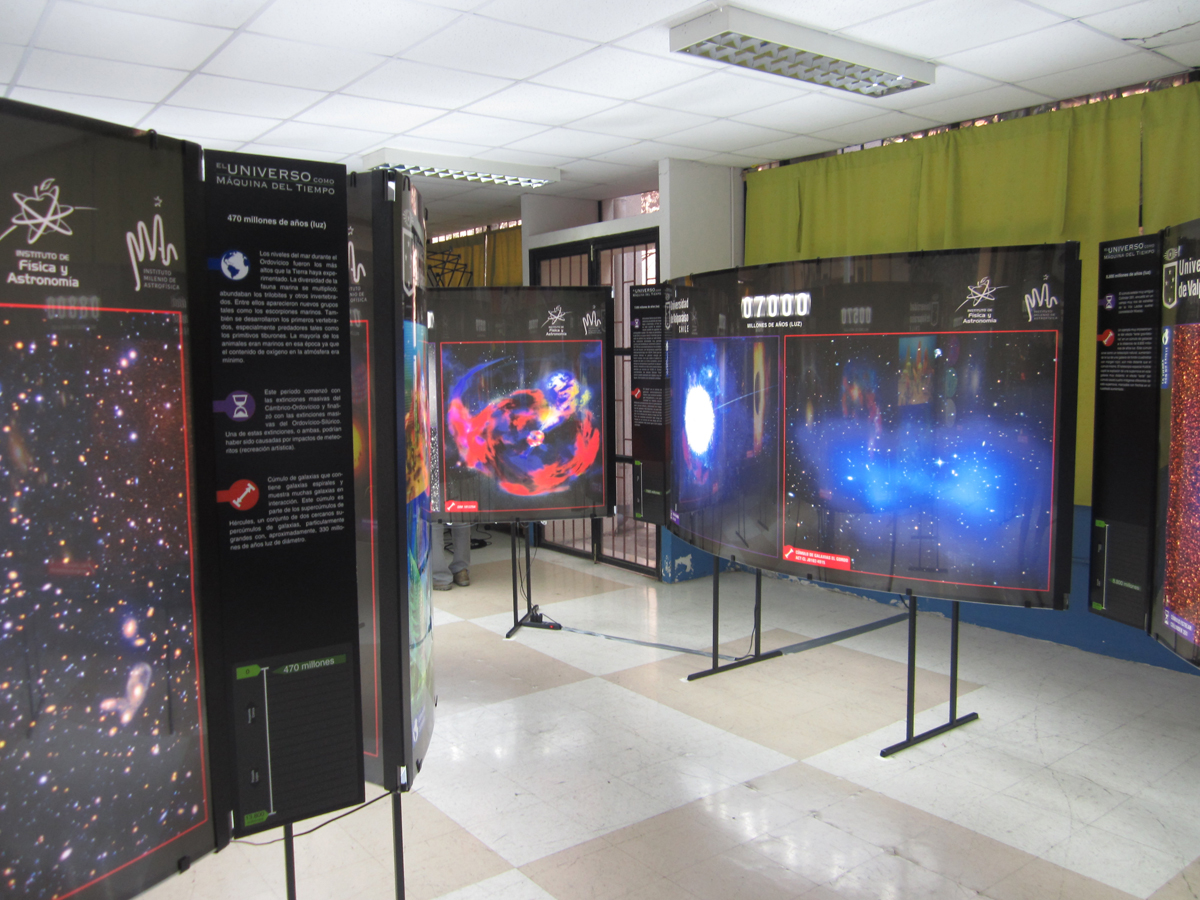 A la ceremonia, en el cual intervinieron el Dr. Nikolaus Vogt (investigador del IFA y gestor de la iniciativa), la Dra Amelia Bayo, (investigadora del IFA), Dr. José Villanueva (Director del Instituto de Física y Astronomía) y el Sr. Cristián Corvalán (Prorrector de la U. de Valparaiso), asistieron directivos del Liceo Eduardo de la Barra (anfitriona de esta primera exposición), directivos de colegios invitados y alumnos. La Exposición "El Universo como Máquina del Tiempo" estará disponible para ser exhibida en colegios o centros culturales, y puede ser solicitada al Centro de Extensión y Comunicación de la U. de Valparaíso, escribiendo a This email address is being protected from spambots. You need JavaScript enabled to view it.
A la ceremonia, en el cual intervinieron el Dr. Nikolaus Vogt (investigador del IFA y gestor de la iniciativa), la Dra Amelia Bayo, (investigadora del IFA), Dr. José Villanueva (Director del Instituto de Física y Astronomía) y el Sr. Cristián Corvalán (Prorrector de la U. de Valparaiso), asistieron directivos del Liceo Eduardo de la Barra (anfitriona de esta primera exposición), directivos de colegios invitados y alumnos. La Exposición "El Universo como Máquina del Tiempo" estará disponible para ser exhibida en colegios o centros culturales, y puede ser solicitada al Centro de Extensión y Comunicación de la U. de Valparaíso, escribiendo a This email address is being protected from spambots. You need JavaScript enabled to view it.
Imágenes: el Dr. Nikolaus Vogt expone en la inauguración (superior) y una vista de la Exposición exhibida en la Biblioteca del Liceo Eduardo de la Barra (imágen inferior).
Enlaces asociados: Quinta Visión (Comienza en el minuto 23:219) - El Mercurio de Valparaíso - La Estrella de Valparaíso
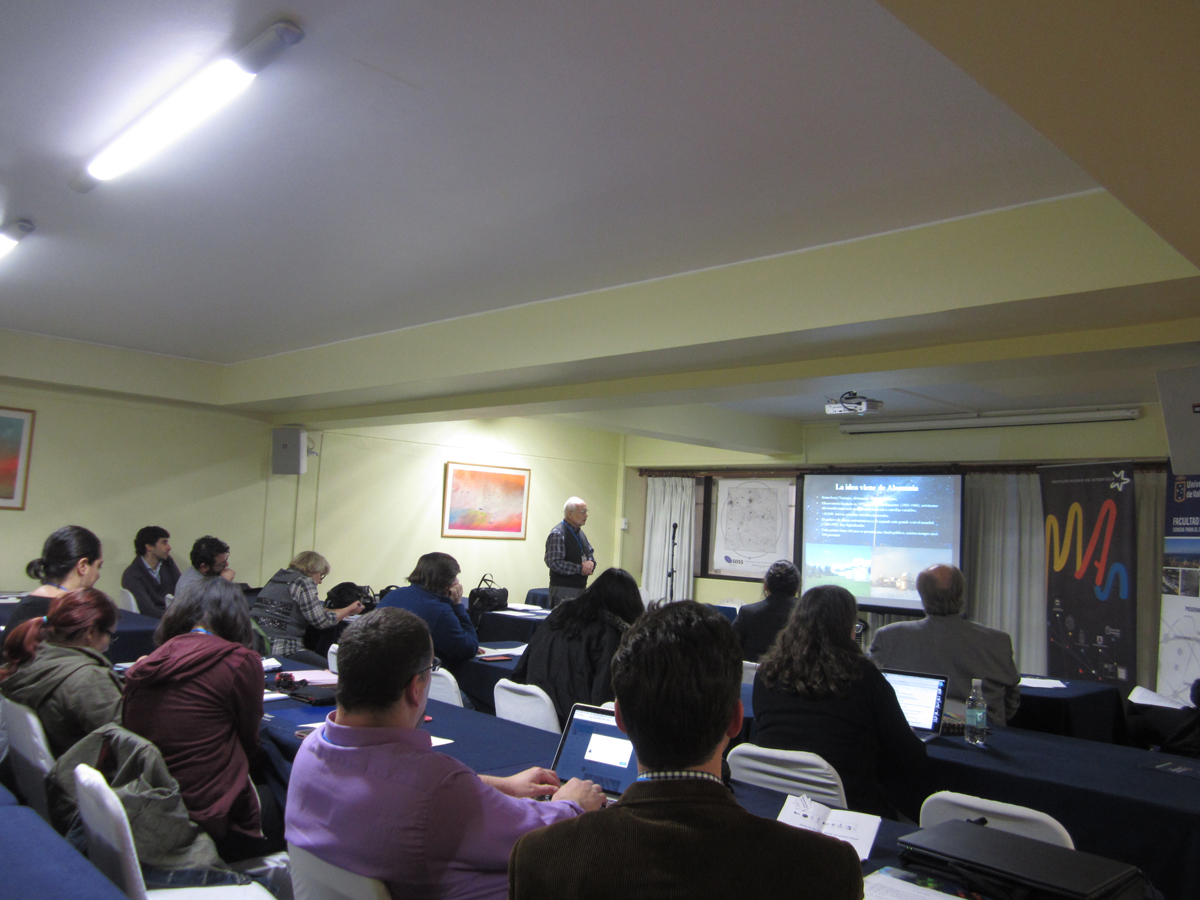 May 31, 2016. IFA News.
May 31, 2016. IFA News.
A succesfull meeting took place in the Gala Hotel in Viña del Mar, on May 25 and 26, in which astronomers, educators adn journalists got together to present their work on the subject of education in astronomy and outreach to the general public, sharing strategies and methods and creating multicultural initiatives in more than one language, and taking advantage of initiatives like Sloan Digital Sky Survey, SDSS, and the Apache Point Observatory Galactic Evolution Experiment, APOGEE. The workshop was financed by a collaboration between the Center for Global Inquiry + Innovation, the Vice President for Research and the Dean for the College of Arts and Sciences of the University of Virginia, as well as the Universidad de Valparaiso and the Millennium Institute of Astrophysics (MAS)
Image: in the image Dr. Nikolaus Vogt, presents the extense activity of the Instituto de Física y Astronomía of the Universidad de Valparaíso, between years 2006 and 2015 in astronomy outreach through public talks, talks and workshops for schools and and exhibition of the Itinerant Exhibition "La Vía Láctea, Nuestro Hogar en el Universo".
Asociated link: Noticia UV Conferencia APOGEE
Mayo 24, 2016. Noticia IFA
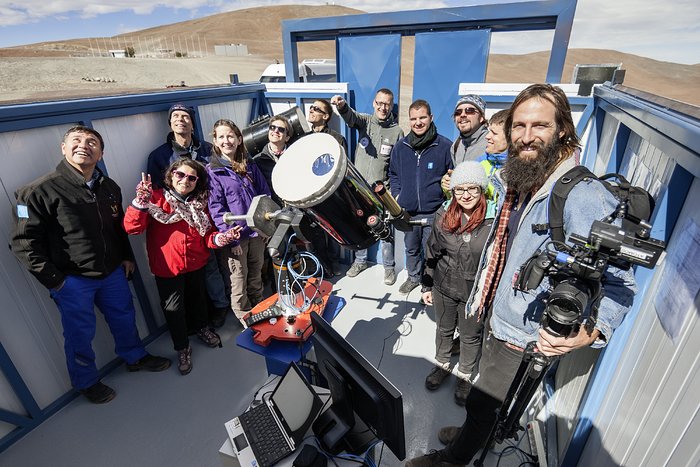 El lunes 9 de Mayo pasado, Karina Rojas, que actualmente realiza sus estudios de Doctorado en el Instituto de Física y Astronomía, visitó las dependencias del Observatorio Atacama Large Millimetre Array, ALMA, en sus palabras "el sueño de cualquier apasionado en astronomía"· y al Observatorio del Cerro Paranal donde tuvo la oportunidad de observar el tránsito del planeta Mercurio frente a nuestro Sol, un evento que no se repetirá hasta Noviembre de 2019. A mediados de febrero de este año, la European Southern Observatory, ESO, lanzó una campaña para que divulgadores y apasionados por la astronomía de todos los países pertenecientes a ESO pudieran conocer las instalaciones de ALMA y cerro Paranal, también coincidiendo esta visita con el tránsito de Mercurio, ocurrido el 9 de Mayo recién pasado. Karina Rojas participó junto a sus compañeras Javiera Rey y Carolina Agurto (las tres son integrantes del Grupo Star Tres cuya misión es el de informar y enseñar de forma divertida la astronomia y ciencias afines, y poder llegar al público de todas las edades). El Grupo Star Tres quedó finalista, y el destino llevó a que fuese finalmente Karina la que representara a su grupo ya que las dos otras integrantes se encuentran realizando su doctorado fuera del pais, Carolina en el Max Planck Institute for Extraterrestrial Physics (MPE), en Alemania y Javiera en el Observatorio de Ginebra, perteneciente a la Universidad de Ginebra, en Suiza. "Acepte feliz emprender la aventura #MeetESO para conocer por primera vez telescopios impresionantes como el VLT y VISTA, de los cuales he analizado datos para mi tesis pero que jamás había conocido! y por supuesto el viaje a ALMA que es un sueño para cualquier apasionado por la astronomía". En esta hermosa reunión Meet ESO se reunieron representantes de Francia, Alemania, UK, USA, Netherlands, Brazil y, por supuesto, Chile. Imágen: Karina Rojas, segunda desde la derecha, rodeada de los demás ganadores del concurso, observa el Tránsito del planeta Mercurio en un telescopio con filtro adecuado en el norte de Chile.
El lunes 9 de Mayo pasado, Karina Rojas, que actualmente realiza sus estudios de Doctorado en el Instituto de Física y Astronomía, visitó las dependencias del Observatorio Atacama Large Millimetre Array, ALMA, en sus palabras "el sueño de cualquier apasionado en astronomía"· y al Observatorio del Cerro Paranal donde tuvo la oportunidad de observar el tránsito del planeta Mercurio frente a nuestro Sol, un evento que no se repetirá hasta Noviembre de 2019. A mediados de febrero de este año, la European Southern Observatory, ESO, lanzó una campaña para que divulgadores y apasionados por la astronomía de todos los países pertenecientes a ESO pudieran conocer las instalaciones de ALMA y cerro Paranal, también coincidiendo esta visita con el tránsito de Mercurio, ocurrido el 9 de Mayo recién pasado. Karina Rojas participó junto a sus compañeras Javiera Rey y Carolina Agurto (las tres son integrantes del Grupo Star Tres cuya misión es el de informar y enseñar de forma divertida la astronomia y ciencias afines, y poder llegar al público de todas las edades). El Grupo Star Tres quedó finalista, y el destino llevó a que fuese finalmente Karina la que representara a su grupo ya que las dos otras integrantes se encuentran realizando su doctorado fuera del pais, Carolina en el Max Planck Institute for Extraterrestrial Physics (MPE), en Alemania y Javiera en el Observatorio de Ginebra, perteneciente a la Universidad de Ginebra, en Suiza. "Acepte feliz emprender la aventura #MeetESO para conocer por primera vez telescopios impresionantes como el VLT y VISTA, de los cuales he analizado datos para mi tesis pero que jamás había conocido! y por supuesto el viaje a ALMA que es un sueño para cualquier apasionado por la astronomía". En esta hermosa reunión Meet ESO se reunieron representantes de Francia, Alemania, UK, USA, Netherlands, Brazil y, por supuesto, Chile. Imágen: Karina Rojas, segunda desde la derecha, rodeada de los demás ganadores del concurso, observa el Tránsito del planeta Mercurio en un telescopio con filtro adecuado en el norte de Chile.
Enlaces asociado: Concurso #MeetESO - Sitio web Grupo Star Tres



